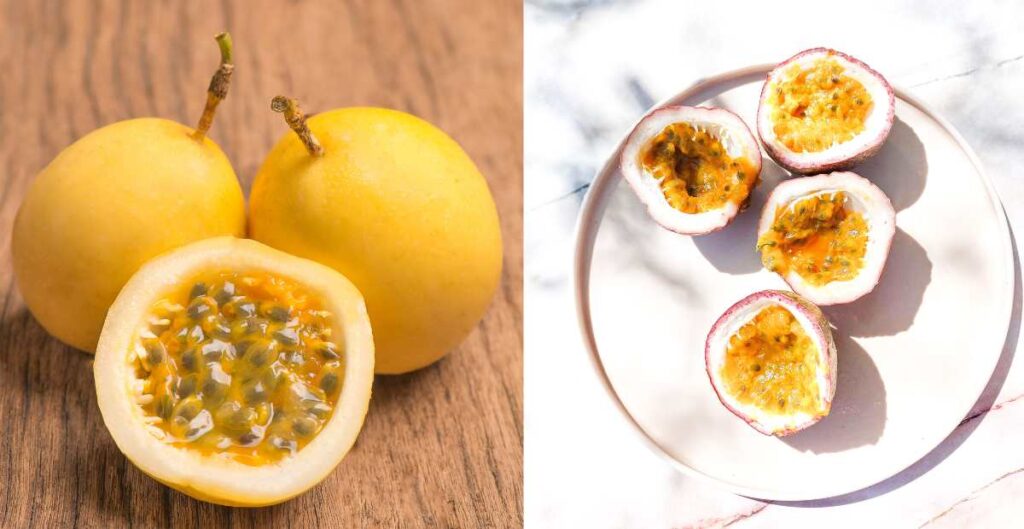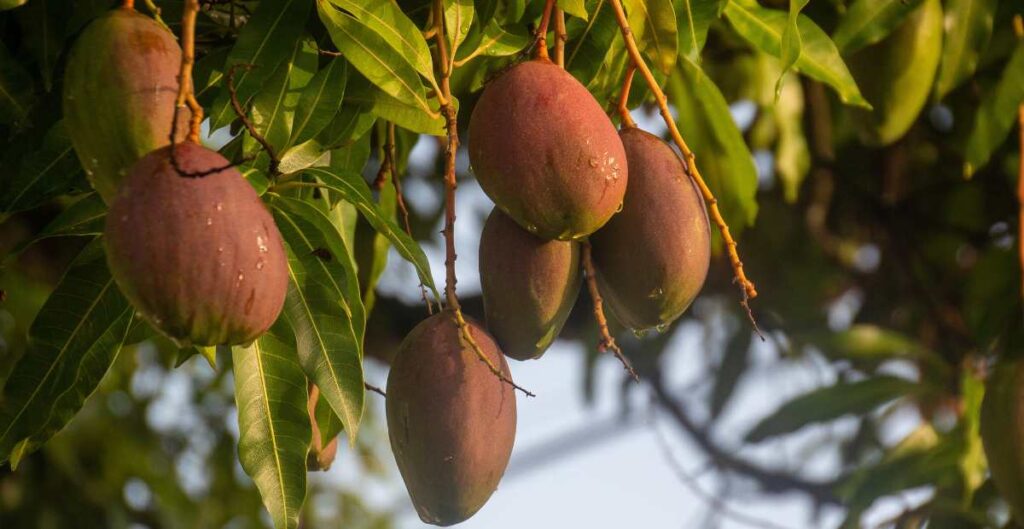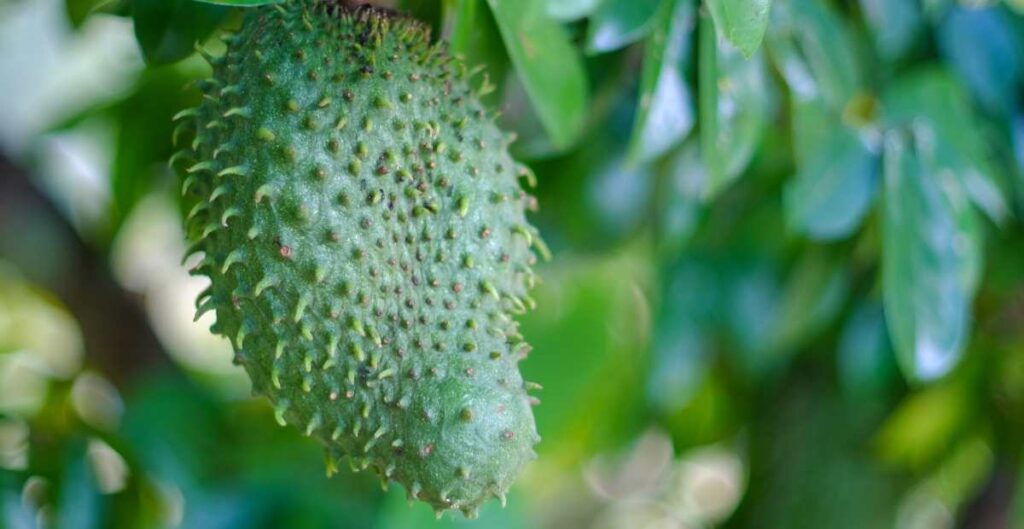When you think of Costa Rica, you probably picture lush rainforests, pristine beaches, and exotic wildlife. But beyond its natural beauty, Costa Rica is a tropical fruit paradise, offering a rich variety of delicious fruits that are just as vibrant and diverse as the country itself.
Costa Rican fruits aren’t just a treat for the taste buds—they offer a cultural experience reflecting the country’s rich biodiversity and sustainable practices. Whether you’re planning a trip to Costa Rica or simply curious about tropical fruits, this guide will take you on a journey through the best fruits to try and what makes them so special.
{ “@context”: “https://schema.org”, “@type”: “Article”, “mainEntityOfPage”: { “@type”: “WebPage”, “@id”: “https://castleofozcostarica.com/costa-rican-fruits/” }, “headline”: “A Taste of Costa Rican Fruits”, “description”: “Discover the vibrant and delicious fruits of Costa Rica, from pineapples and bananas to exotic choices like guanábana and cas. Learn about the health benefits and the best ways to enjoy these tropical treasures during your stay.”, “image”: “https://castleofozcostarica.com/wp-content/uploads/2024/08/Costa-Rican-Tropical-Fruits.jpg”, “author”: { “@type”: “Person”, “name”: “The Castle of Oz”, “url”: “https://castleofozcostarica.com/author/stewart/” }, “publisher”: { “@type”: “Organization”, “name”: “The Castle of Oz”, “logo”: { “@type”: “ImageObject”, “url”: “https://castleofozcostarica.com/wp-content/uploads/2022/05/Costa-Rica-Destination-Wedding-The-Castle-of-Oz-Wedding-Venue-1.jpg.webp” } }, “datePublished”: “2024-08-27”, “dateModified”: “2024-08-27”, “keywords”: “Costa Rican fruits, tropical fruits in Costa Rica, pineapple Costa Rica, Costa Rican mangoes, exotic Costa Rican fruits, fruits in Costa Rica”, “articleSection”: “Travel, Food, Culture”, “mainEntity”: [ { “@type”: “Question”, “name”: “What are the most popular fruits in Costa Rica?”, “acceptedAnswer”: { “@type”: “Answer”, “text”: “The most popular fruits in Costa Rica include pineapples, bananas, mangoes, passion fruit, cas (sour guava), and starfruit. These fruits are widely enjoyed and can be found in local markets and restaurants.” } }, { “@type”: “Question”, “name”: “What are the health benefits of Costa Rican fruits?”, “acceptedAnswer”: { “@type”: “Answer”, “text”: “Costa Rican fruits like guanábana, cas, and pineapples are rich in antioxidants, vitamins, andWhat fruits grow in Costa Rica?
Costa Rica’s tropical climate provides the perfect environment for a variety of fruits, from the familiar to the exotic. Some of the most common fruits you’ll find here include pineapples, bananas, mangoes, and passion fruits, but the country also offers unique fruits like cas (sour guava), guanábana (soursop), pejibaye (peach palm fruit), and mamón chino (rambutan).
Let’s dive into some of the top Costa Rican fruits you absolutely must try:
Top Costa Rican Fruits You Must Try
Pineapple
Costa Rica is the world’s largest exporter of pineapples, known for their incredible sweetness and juiciness. Whether enjoyed fresh, blended in smoothies, or served in cocktails like Piña Coladas, Costa Rican pineapples are a true delight. Packed with vitamin C and enzymes that aid digestion, pineapples in Costa Rica aren’t just delicious—they’re also incredibly good for your health.

Bananas
Another global leader, Costa Rica is the third-largest exporter of bananas. These fruits are a staple in Costa Rican agriculture and diet, appearing in everything from breakfasts to desserts. With their rich flavor and numerous health benefits bananas in Costa Rica are a must-try.
Bananas are one of the most common fruits in Costa Rica. People enjoy them fresh and add them to smoothies. Thanks to the country’s fertile soil and ideal growing conditions, bananas in Costa Rica are particularly flavorful.
These fruits are packed with essential nutrients. They also contain various antioxidants and phytonutrients that benefit weight loss, digestion, and heart health.
- potassium
- vitamin B6
- vitamin C
- various antioxidants and phytonutrients

Passion Fruit
Costa Rica boasts two varieties of passion fruit: maracuyá (tart) and granadilla (sweet). While maracuyá has a vibrant orange pulp that’s perfect for blending into juices, granadilla has a lighter, almost transparent filling. Both are bursting with flavor and are rich in vitamins A, C, and E, as well as antioxidants that support heart health.

Sour Guava (Cas)
Unique to Costa Rica, cas is a small, tart fruit that’s often enjoyed as a refreshing juice. It’s packed with more vitamin C than oranges and is a fantastic source of antioxidants. If you’re a fan of tangy flavors, don’t miss out on this Costa Rican favorite.

Starfruit (Carambola)
Carambola, or starfruit, gets its name from its star-shaped cross-sections. This visually stunning fruit is also delicious and often used to garnish dishes or made into a refreshing juice. Its tart flavor pairs well with both sweet and savory foods.
The high levels of antioxidants in starfruit make it a good anti-inflammatory , helping to relieve symptoms of psoriasis and dermatitis. The fiber in carambola can also speed up your metabolism and help you feel fuller longer, promoting weight loss.

Peach Palm Fruit (Pejibaye)
Pejibaye is a versatile fruit used in both sweet and savory dishes in Costa Rica. Often boiled and served with mayonnaise or sour cream, this tropical fruit is also a staple at the annual Pejibaye Festival. Every October, the sleepy village of Tucurrique comes alive with thousands of visitors to celebrate this unique fruit.
Mango
Costa Rica offers two varieties of mangoes. “Mangas” are the larger, rounder fruits, with smooth skin that can be red, yellow, or green. They are about the size of a bocce ball and are best when the skin is just slightly soft to the touch. On the other hand, “Mangos” are smaller, about the size of a tennis ball, with firmer skin and a more fibrous interior compared to mangas.
Both mangas and mangos are packed with antioxidants that reduce stress and may aid in combating obesity. The fiber in these fruits supports digestive health, helping with both constipation and diarrhea. Additionally, mangoes are rich in vitamins A, C, E, and K, as well as potassium, all of which contribute to heart health and benefit the hair, skin, and eyes.
Mangos are incredibly popular in Costa Rica, where people enjoy them in various ways. Whether eaten fresh, added to smoothies, or served with salt, lime, and Salsa Lizano, mangos are a beloved fruit you shouldn’t miss.

Coconuts (Cocos)
Coconuts are another tropical staple in Costa Rica. The water from young coconuts, known as pipa fría, serves as a refreshing drink perfect for staying hydrated in the heat. The flesh of mature coconuts is used in a variety of dishes, from desserts to savory recipes.
Most of the benefits of coconut water come from its high levels of electrolytes like potassium, calcium, and magnesium. These essential minerals play crucial roles in maintaining your body’s hydration and overall health.

Cacao
Cacao is not just the source of chocolate but also a significant part of Costa Rican culture. The cacao fruit itself is filled with sweet pulp and seeds that can be eaten raw. Whether you enjoy it as chocolate or in its natural form, cacao is a Costa Rican fruit with a rich history.
Cacao vs. cocoa
Cacao is the fruit in its raw form before it’s ever processed. Cocoa is usually a powder made from cacao that you bake with. It’s flavor isn’t as bitter as raw cacao, but it has more sugar.
Its great source of health benefits and has been proved by many cacao takers to nourish our physical and energetic bodies. This fruit is a great method for helping you deeply connect with your inner self and others by opening your heart. People living with anxiety and fears find more joy and love by using cacao more often.

Soursop (Guanábana)
Guanábana, or soursop, is a large, spiky fruit with creamy flesh that combines the flavors of mango, strawberry, and pineapple. It’s often used in juices, sorbets, and desserts. This costa rican tropical fruit is high in vitamin C, an antioxidant known to boost immune health. Is not only delicious but also packed with nutrients, making it a popular choice for those looking to boost their health.
Its scientific name is Annona muricata, in Costa Rica is called Guanabana, but it’s also named paw-paw, sirsak, and graviola in other parts of the world.

Costa Rica Fruit Season
Understanding Costa Rica fruit seasons can enhance your culinary experience during your visit. For example, mangos are typically at their peak from May to August, while starfruit and passionfruit are more common from December to February. Knowing what fruits grow in Costa Rica and when they’re available will help you make the most of your tasting adventures.
Health Benefits of Costa Rican Fruits
The vibrant and flavorful fruits in Costa Rica don’t just taste good—they’re also incredibly nutritious. Many local fruits, such as guava, soursop, and passionfruit, brim with vitamins, antioxidants, and fiber that support overall health, boost immunity, and promote good digestion.
Why Should You Eat More Costa Rican Fruits?
Support Digestive Health: Bananas and mangoes are high in dietary fiber, which aids digestion and supports gut health.
High in Vitamins: Tropical fruits like pineapples and passion fruits are excellent sources of vitamin C, which helps protect cells and boosts your immune system.
Rich in Antioxidants: Fruits like cas, starfruit, and soursop contain powerful antioxidants that reduce inflammation and protect against diseases.
How to Enjoy Costa Rican Fruits During Your Visit?
You can enjoy Costa Rican fruits in countless ways. Visit a local farmer’s market, dine at a beachside restaurant, or snack on fresh fruit by the pool to discover the wide variety of fruits Costa Rica offers. Savor them fresh, blend them into smoothies, or incorporate them into traditional Costa Rican dishes to fully immerse yourself in the vibrant flavors of this country.
The Best of Costa Rican Fruits
Exploring Costa Rican fruits is a true highlight of any visit to this beautiful country. With such a diverse selection of fruits in Costa Rica, there’s always something new to try. Whether you’re savoring a juicy pineapple, enjoying the tartness of starfruit, or indulging in the creamy sweetness of guanábana, each fruit offers a unique taste of Costa Rica’s natural bounty.
So, when planning your trip, make sure to include a tasting tour of the vibrant and flavorful fruits Costa Rica has to offer.
Enjoy Costa Rican Fruits at The Castle of Oz
At The Castle of Oz, we offer more than just a luxurious stay—we provide an authentic taste of Costa Rica’s rich and vibrant fruit offerings. Whether you’re planning a destination wedding, a corporate event, or simply enjoying a vacation retreat, you’ll have the opportunity to savor these incredible tropical fruits right from the source.
From the sweet and juicy mangoes to the unique flavors of starfruit and passion fruit, every bite is a celebration of the natural abundance that Costa Rica has to offer. Let us make your experience unforgettable, not just through breathtaking views and exceptional service, but by connecting you with the true essence of Costa Rican culture through its delicious fruits.

